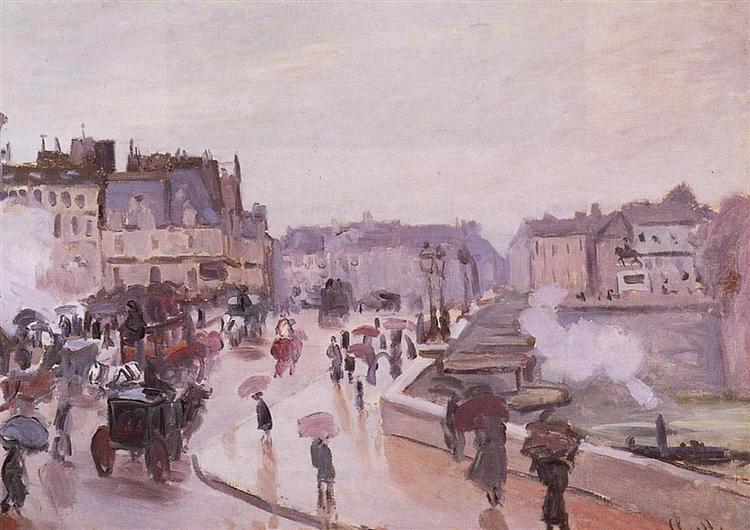描述
In his 1872 painting "Le Pont Neuf", Claude Monet presents a mesmerizing view of the iconic bridge that connects the Right Bank and Left Bank of the Seine in Paris. Part of a series of paintings dedicated to this iconic cityscape, this work captures the very essence of light and movement, characteristic of the Impressionist style to which Monet belongs. With his loose brushwork and interest in the changing effects of light, Monet achieves a perfect balance between reality and subjective perception in this piece.
The composition of the work is marked by the strong presence of the bridge, whose stone structures are drawn in the middle of a dynamic and luminous environment. The perspective opens towards the Seine, where the sun's exposure shines on the surface of the water, reflecting shades of blue and green in subtle harmony. Monet uses a colour palette that encompasses warm and cold tones, generating a vibrant atmosphere that captures a moment in time. This interplay of light and colour becomes one of the most distinctive features of Monet's style, evoking the ephemeral beauty of the urban landscape.
The characters in the work are few, allowing the viewer's attention to focus on the relationship between the bridge and its surroundings. Some figures are seen in the distance, suggesting the daily life that goes on in the city without diverting the viewer's gaze from the magnificence of the bridge itself. This subtle device points to the idea that, although life bustles around it, the bridge remains a symbol of connection and continuity in the metropolitan landscape.
One of the particularities of “Le Pont Neuf” is its relevance in the context of the transformation of Paris during the 19th century. The 1870s were a period of modernization in the city, amidst radical changes that affected its architecture and urban planning. Monet, as part of the Impressionist movement, was interested in depicting this new facet of the city, highlighting its beauty while documenting a moment of transition.
Monet was a pioneer in exploring light and atmosphere in his work, and The Pont Neuf is a true reflection of this pursuit. The technique of applying quick, loose brushstrokes not only creates vibrant textures, but also introduces a sense of immediacy and a dialogue between the artist and the changing nature. This work is part of his exploration of the urban landscape, which led him to capture other iconic landmarks such as Rouen Cathedral and the Water Lilies, revealing a deep connection between nature and contemporary life.
In terms of artistic context, The Pont Neuf fits into the broader movement of Impressionism, which suddenly challenged academic conventions of painting by focusing on direct visual experience. Monet, along with his contemporaries, broke with traditional formulas, inviting the viewer to experience the world in a more subjective and visceral way.
This work, though often overlooked among his more celebrated canvases, is a powerful manifestation of Monet's move towards using light and colour as narrative elements. It falls within one of the richest and most transformative periods in art, where cities were beginning to be seen and offered to the world through a new lens, making The Pont Neuf not just a representation of a place, but also an exploration of the human experience in modernity.
KUADROS ©, a famous painting on your wall.
Hand-made oil painting reproductions, with the quality of professional artists and the distinctive seal of KUADROS ©.
Painting reproduction service with satisfaction guarantee. If you are not completely satisfied with the replica of your painting, we will refund 100% of your money.

